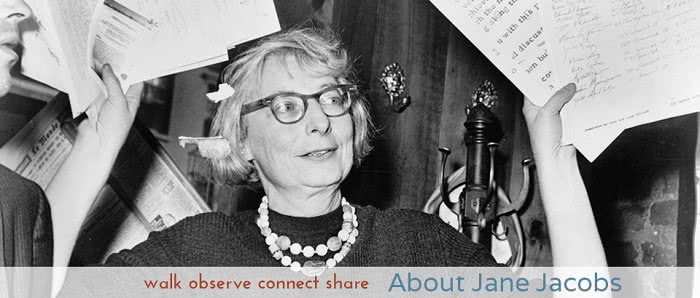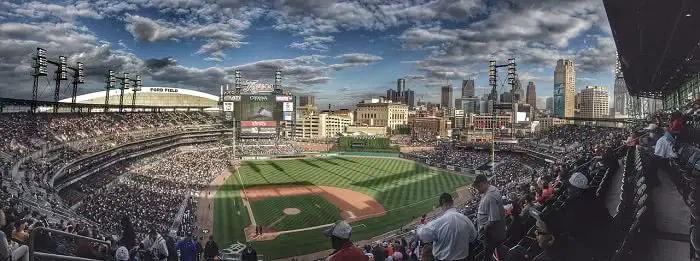Jane Jacobs grew to fame after her book The Death and Life of Great American Cities. But what really was her vision? To create a social hub and community-oriented cities rather than cities that are built for vehicles and transport. She encouraged liveability rather than convenience. Her famous quote “eyes on the street” suggests that we should all walk around our cities and everything should be at the eye-level and visible to people. People should be able to encounter others and create a socially oriented neighbourhood that helps people to form a community. Many philosophers including Jan Gehl followed this tenant of Jane Jacobs. Jacobs encouraged walkability and social spaces such as parks and city squares that give meaning and associations for the public space. Today’s placemaking movement closely follows Jacobs philosophy. As Jane Jacobs worked closely with the founder of PPS who is William H. Whyte, the principles of placemaking is derived from Jane Jacobs and considers her one of the pioneers in City Planning. Placemaking tries to take the public ‘space’ and makes it into a ‘place’ of deeper associations for people.

Related Article: Influence on Urban Planning by Kevin A. Lynch
When the community is involved in placemaking projects, they feel a sense of place where they get involved with the place on a regular basis. When people visit the space many times after going there for the first time, there is a sense of place formed for the individual where they visit the space regularly and form a connection with the ‘place.’ This is usually the case with public spaces and when people appreciate the public space, they re-visit it many times. This is one of the ways to measure success in a public space. Jacobs encouraged sidewalks and people-encounters. In her book, she talks about how New York City allows her to meet new people when she walks along the sidewalk. She calls this “sidewalk ballet” which means that the sidewalk has a life of its own and when people conduct activities on the sidewalks, it gives the space a meaning and deeper association. Jacobs speaks about meeting many people while she walks along the sidewalks and getting to know the shopkeepers and regularly passers by. This builds a familiarity with space because when people walk, everything is at the eye level and there is a sense of community. Jan Gehl supports this theory of Jacobs and has coined the term “city at eye level” where he emphasizes the use of the internal senses to direct us in our public spaces. According to him, when our cities allow us to use our senses of sight, touch, feel and taste, we can experience the city at a personal level.
Unfortunately, many countries in the world lack good sidewalks or public spaces like that in New York City. People are unaware of the significance of the outdoor space and how public spaces can benefit humanity. Public spaces are thought of as secondary when it comes to urban living. This is because basic amenities such as housing, sanitation, and reduction of poverty are given the main focus, especially in developing nations. While there is some truth in this, people should still be aware of how good public spaces can make an impact on their livelihoods. Public spaces can give people a voice, come together on various occasions and promote other activities and events such as theatre, music, and art in the public space for everyone to enjoy. Corruption and dictatorship in some countries do not allow this freedom of speech and expression in public space and limits people from interacting with others.
Related Article: Edward Soja’s Theories of Urban Space

More cities are becoming walkable and emphasizing good footpaths and pavements to allow for walkability. This is important for developing public spaces. The amenities around the space such as cafes, art, seating, museums and so forth also have an impact on the way people perceive the space. This is part of Jacob’s “eyes on the street” concept. One of the main reasons for eyes on the street is so that there is more safety for people on the streets as well. According to Jacobs, when more people use the streets then there is greater safety for the citizens, as people can easily call out abuse or discrimination on the street. When there are more eyes on the street, people are safer as because others can help in times of danger. She suggested that people don’t involve in a street when they are forced to do so. They do it when they are attracted to the human interest and activity they find on a street. Jacobs also advocates for high-density neighbourhoods because there are more people around the area who will be familiar with other people around and make an effort to get to know their neighbours.
More streets around the world should adopt Jacob’s philosophy. Some people might say that each country is unique and cannot be understood through Jacob’s example of New York City, but that is not the case. For instance, every city can work on developing their streets and providing good sidewalks to people allowing room for walkability. Walkability is a growing concept in City Planning and there have been many recent books being written on how spaces that support walkability between neighbourhoods allow for happier and healthier cities. According to Jacobs walkability also creates security on the streets. It’s time to change the perceptions of public spaces and take a stand to make the streets accessible so that there are “eyes on the street.”
Related Articles
- Doreen Massey on Urban Space
- Influence on Urban Planning by Kevin A. Lynch
- Jan Gehl’s Promotion of Urban Public Life
- John Friedman’s Theories of Economic Planning
- Top 5 buildings by Le Corbusier
- Edward Soja’s Theories of Urban Space
- Baron Haussmann’s Urban Development of Paris
- The Great Town – Friedrich Engels | Summary